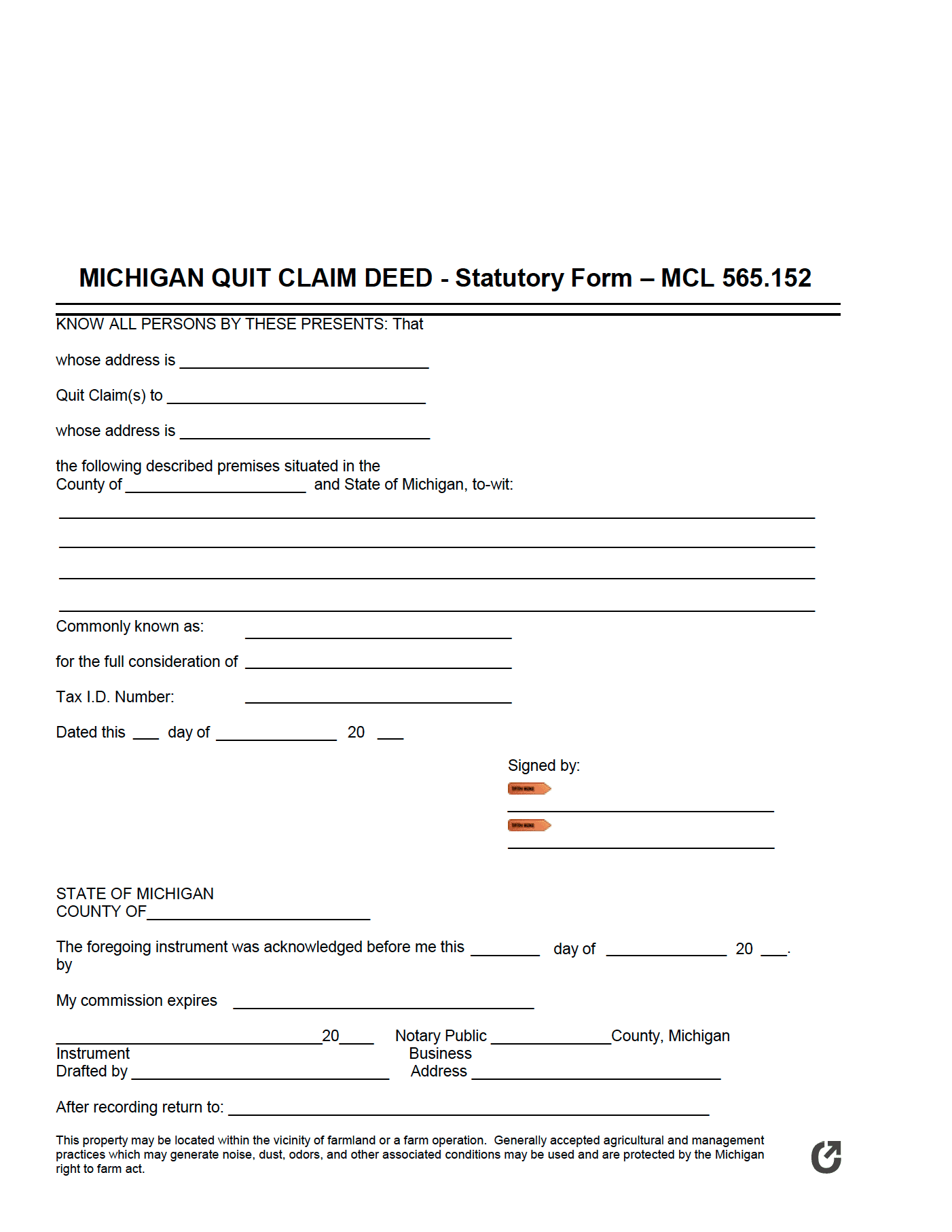Michigan Quit Claim Deed Form
A Michigan Quit Claim Deed is a form that is used for releasing a person’s property ownership rights to another person or entity. In comparison to a warranty deed, the quitclaim is easier, quicker, and less expensive to create. However, this comes at the cost of not including any warranties, meaning the property’s title could potentially contain issues. The person that receives the property is known as the Grantee(s), and the original property owner is known as the “Grantor”. Because the form does not include warranties, it is a popular choice among those that can trust one another, such as family members, friends, and business associates.
Download: Adobe PDF
Requirements
- Grantee Address (§ 565.201(d)): The Grantee’s address must be “legibly printed, typewritten, or stamped” on the deed. Either their street address or the post office address may be provided, as appropriate.
- Grantor’s Business Name and Address (§ 565.201(i)): The name and business address of the party who drafted the deed must be stated in the form.
- Marital Status (§ 565.221): The deed must indicate whether the Grantor is married or single. Alternatively, they can record an affidavit in the Register’s Office which states their marital status.
- Names of Grantor and Notary Public (§ 565.201(a)(c)): Both the Grantor and Notary Public’s names must be clearly printed, typewritten, or stamped underneath their signature.
- Stylistic Requirements (§ 565.201(f)): There are particular stylistic requirements that must be followed when drafting the form, which are:
- A minimum of two and one-half inches (2.5 “) at the top of the first page and at least one-half inch (.5”) on all remaining sides of every page.
- Text is equal to ten-point (10 pt) type.
- Paper color must be white and ink color black.
- Paper is a minimum of twenty (20) pound weight.
- The size of the paper is not less than eight and one-half inches (8.5″) wide and eleven inches (11″) long or more than eight and one-half inches (8.5″) wide and fourteen inches (14″) long (the same applies for attachments).
- Signing requirements (§ 565.152 and § 565.201(c)): Signed by the Grantor and notarized.
How to File
The deed can only be recorded after it has been completed in full, signed by the Grantor, and notarized. To file the form, the Grantor needs to go to their local Register of Deeds. The registry needs to be the same one that the property is located in. The Grantor should be prepared to pay a fee to have the deed recorded.
